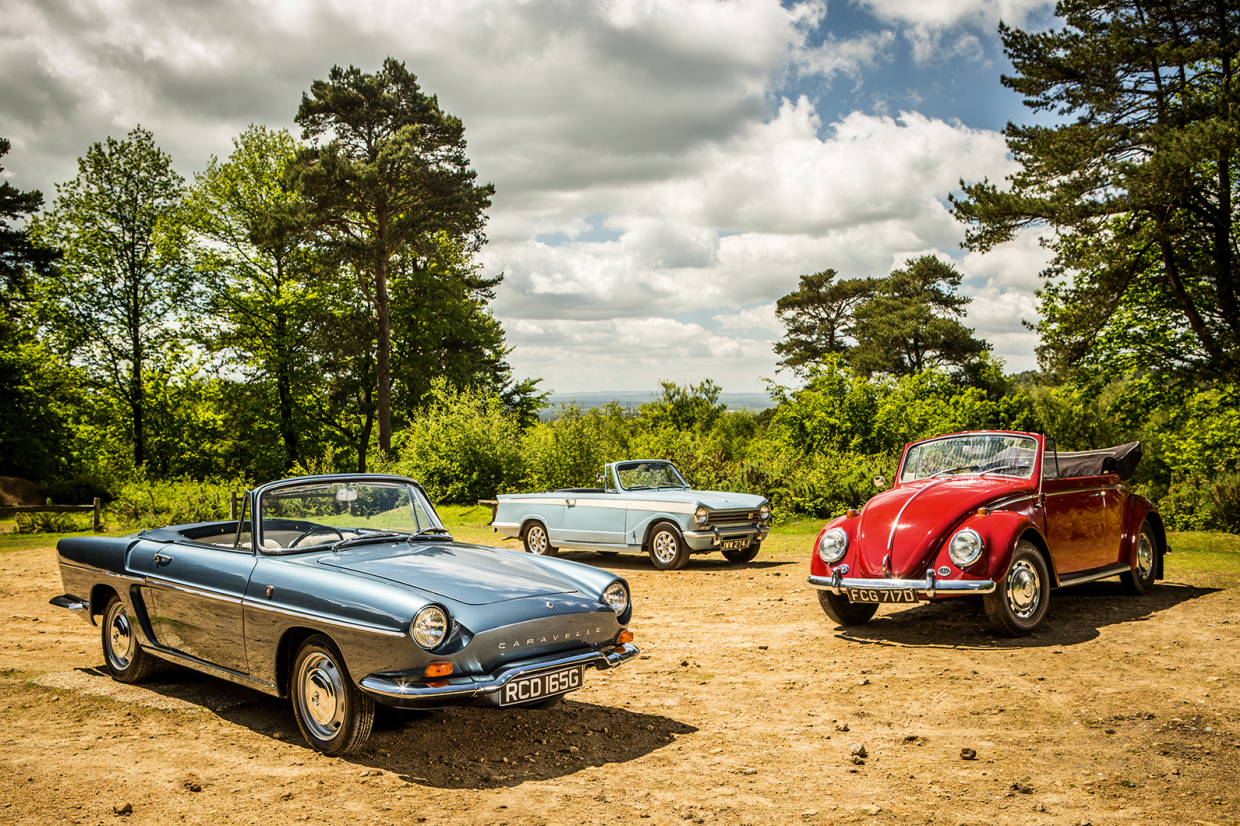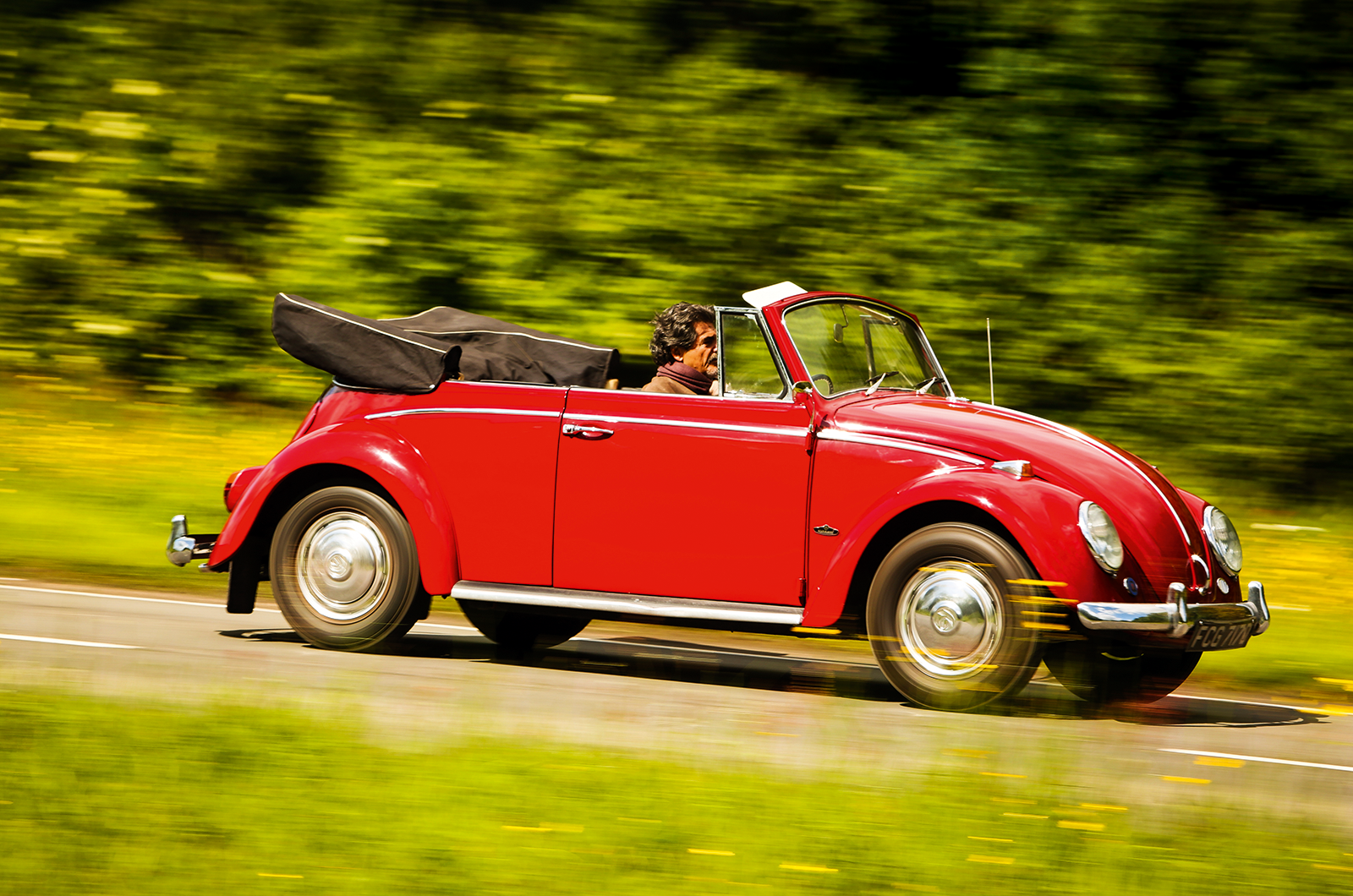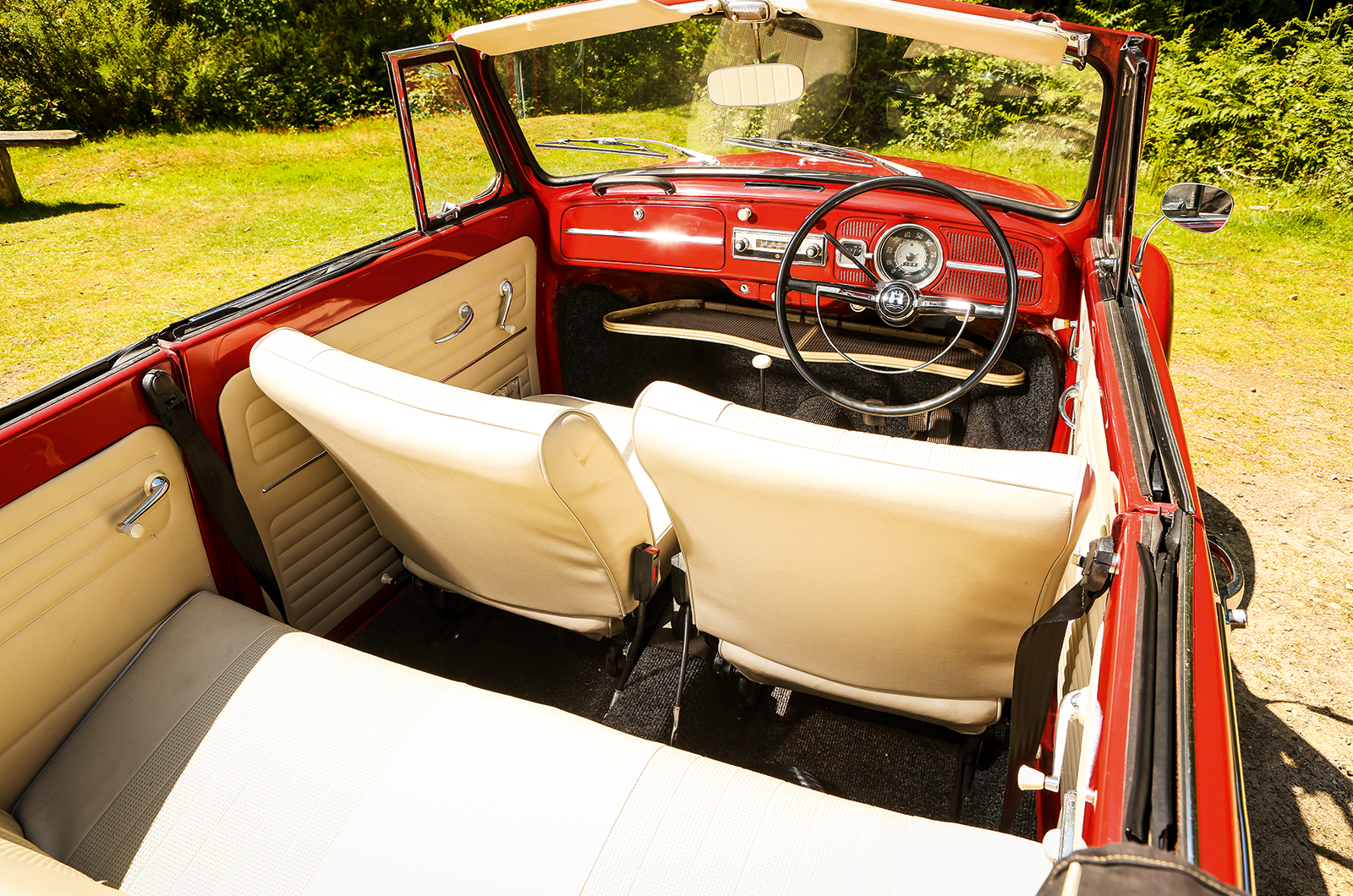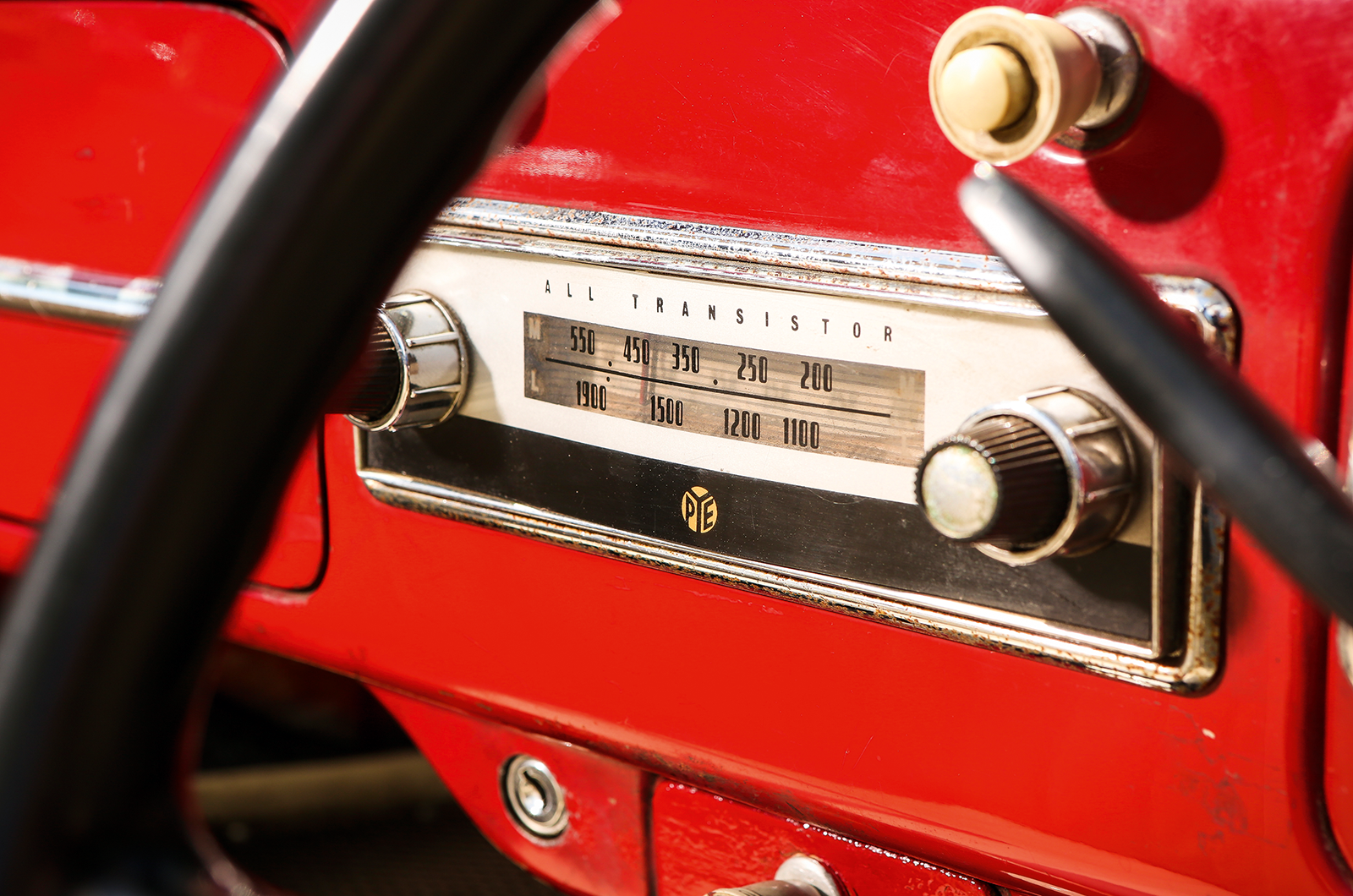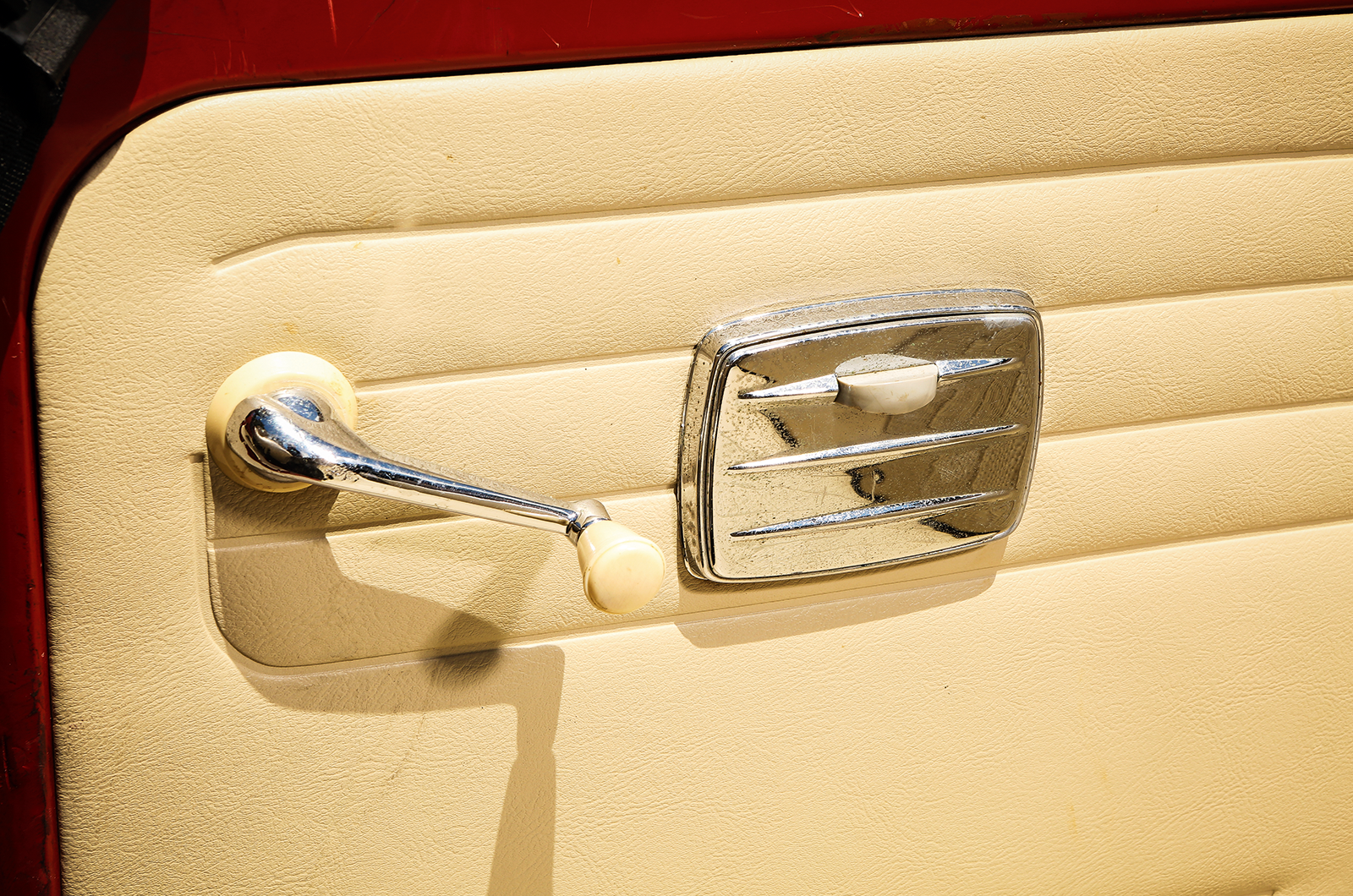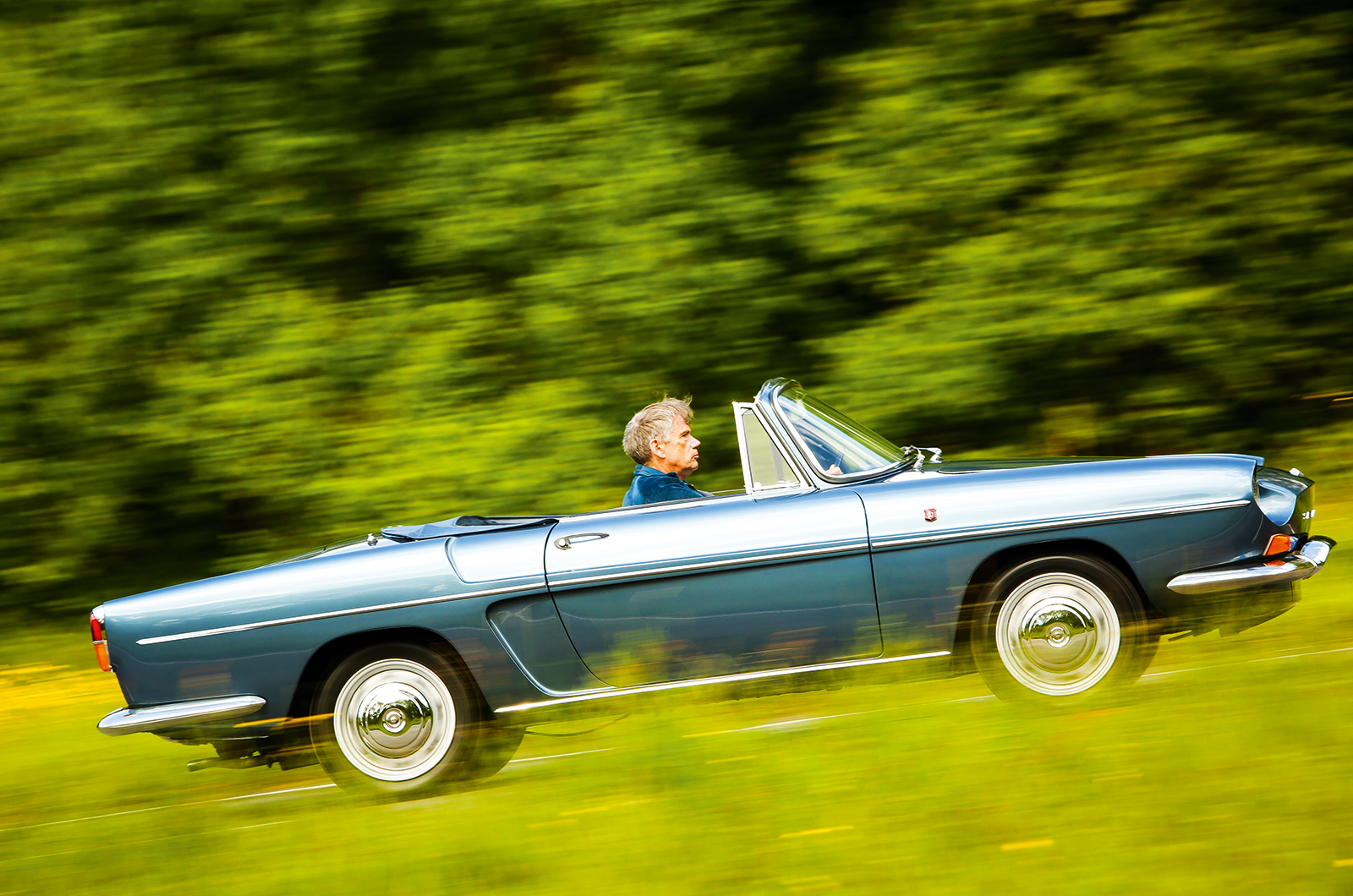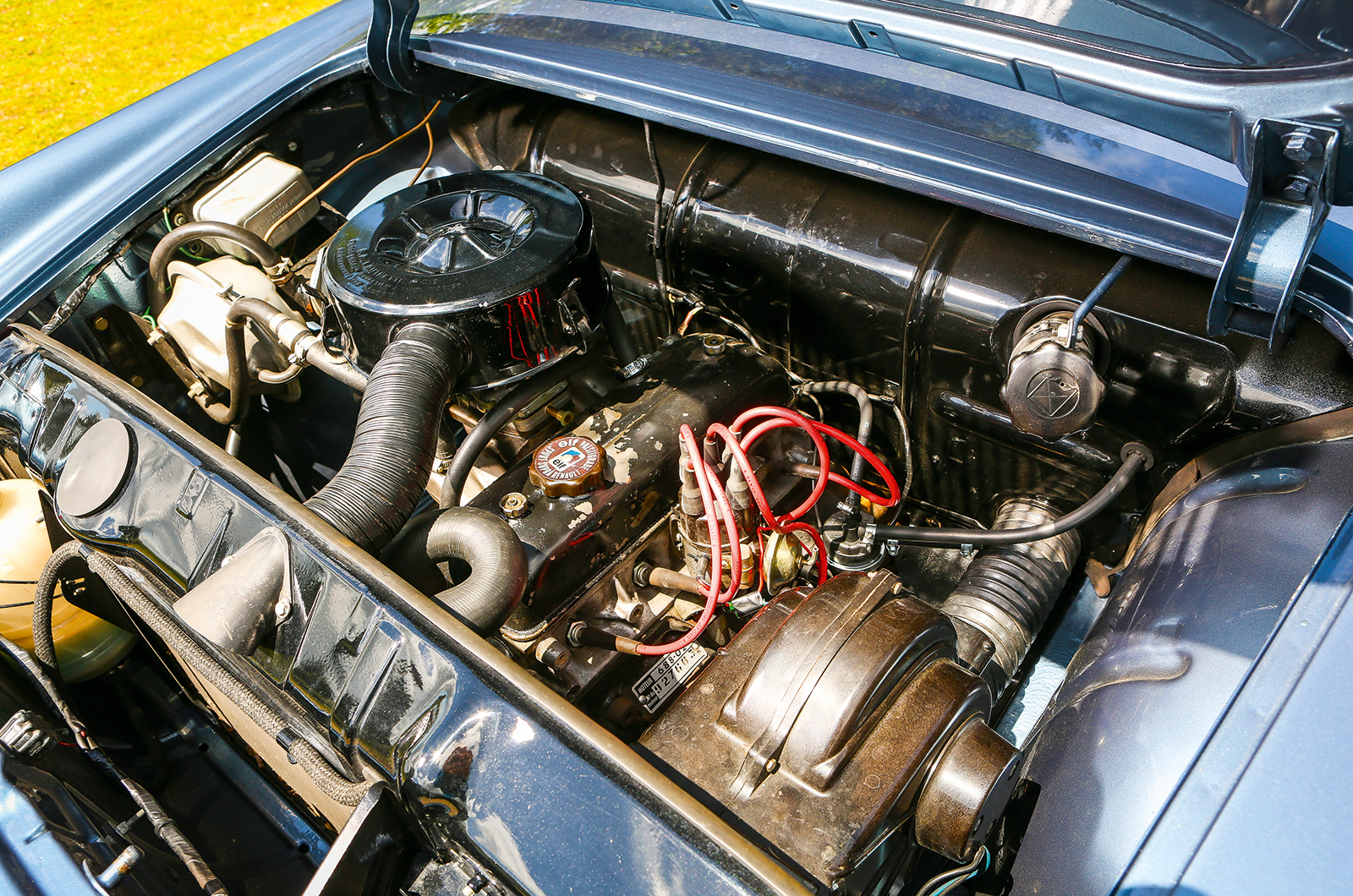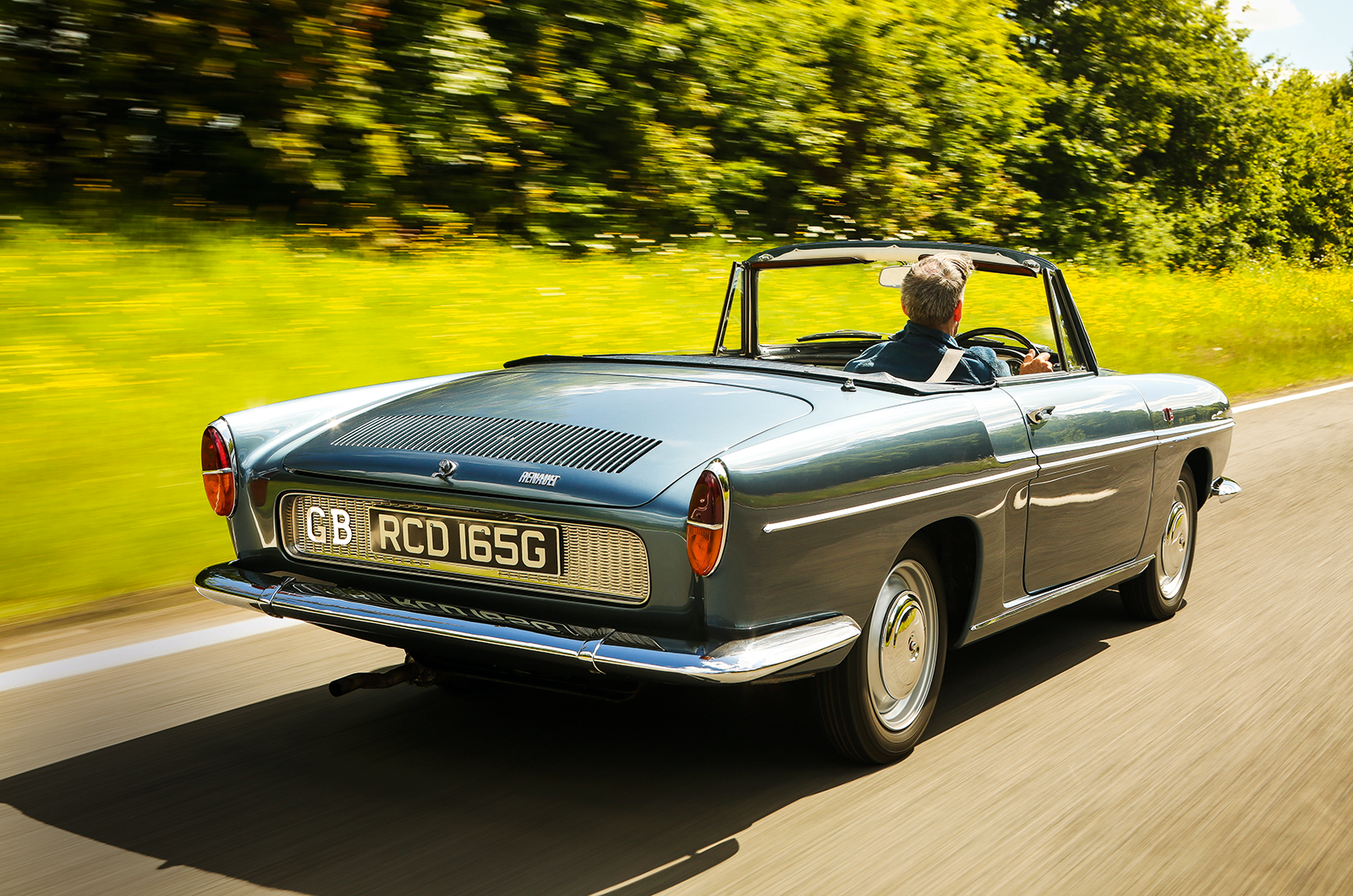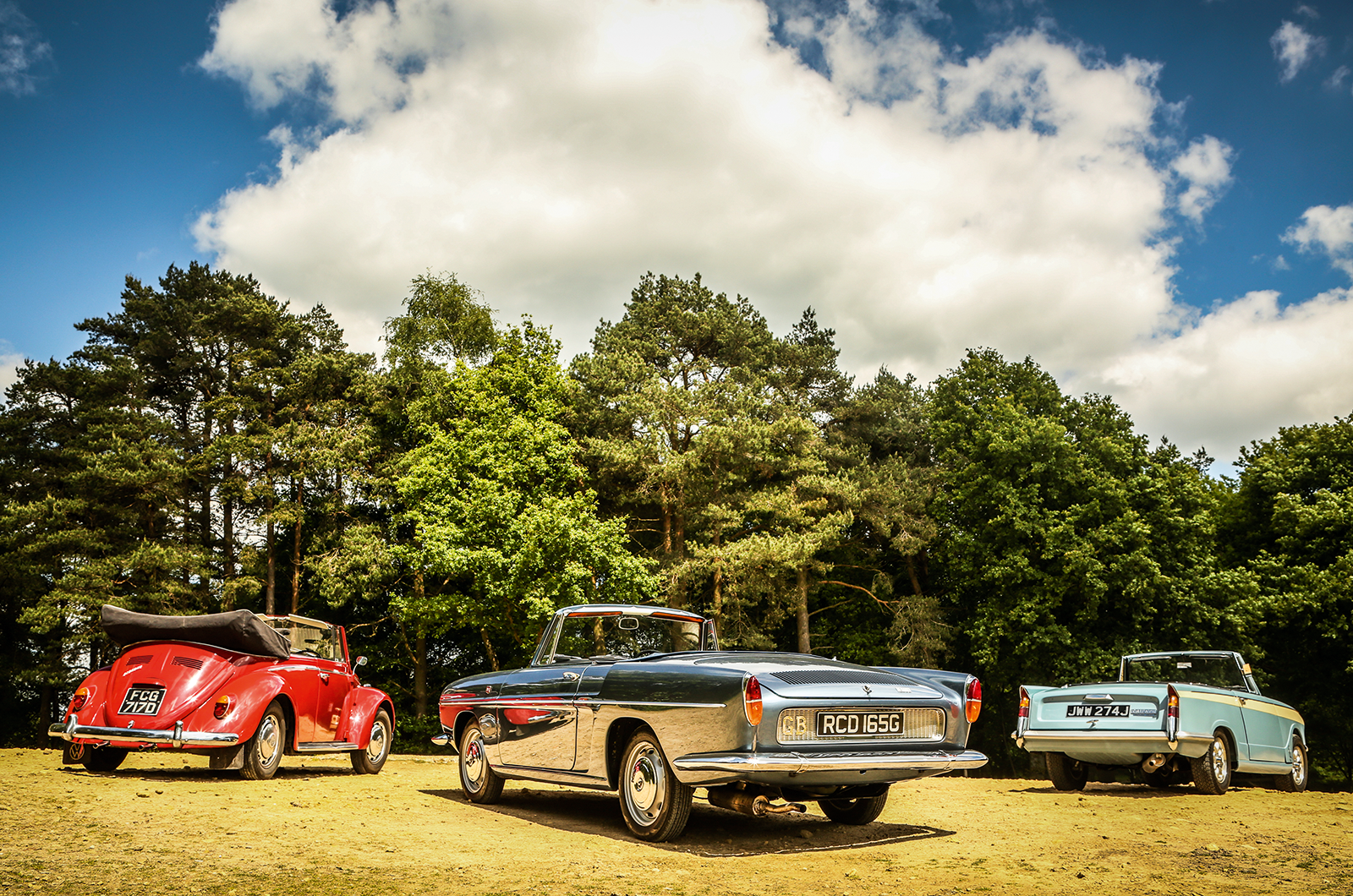Of the three, the Triumph is without doubt the most rorty.
With 61bhp on tap from its 1296cc ‘four’, that should hardly come as a surprise: the Renault gives away 6bhp to the British car, and the Beetle’s flat-four can muster only 40bhp.
The Volkswagen busily chatters away without ever encouraging spirited driving. It’s a pleasant place to be, but has a more relaxed, lazier feel.
It is a car that feels as though it will always get you to your destination, but that it might take some time.
The Caravelle lies somewhere between the two. Its pushrod ‘four’ is a willing unit and, with less weight to haul around than its rivals, the car zips along very nicely without making a fuss.
With only 746kg to propel, the Renault’s modest rear-mounted engine offers a decent turn of speed
In a world of leaf springs and jarring rides, all three cars boasted the novelty of independent rear suspension.
But with their cheap-to-build swing-arm set-ups, they could also have given rise to the term ‘Spinning Sixties’.
I have no intention of replicating the lift-off oversteer with which all three gained a certain notoriety in period, and at sensible speeds they feel utterly benign, but you can’t help thinking that these are cars whose handling limits are to be respected.
Some might argue, then, that our trio offers style over substance, but in the case of the Triumph the chorus of rattles and creaks – a corollary of its separate chassis – leaves you wondering whether perhaps there shouldn’t be a bit more substance holding it all together.
The Caravelle’s well-finished interior is a delight
The Beetle feels far more rigid, yet neither comes close to the Renault.
Forget all preconceptions of French cars being tinny – the Caravelle is beautifully built, as well as a lovely place to be.
The dashboard, for instance, though minimalist, is a visual delight. Where the Beetle is a stark exercise in painted-metal austerity and the Triumph’s simple plank a homage to the G Plan sideboard, the Caravelle is like a junior-level exotic.
From the lovely two-spoke steering wheel to the switchgear, the detailing feels remarkably well executed and belies the car’s humble origins. In the front at least, it also feels wonderfully spacious.
The Volkswagen’s cabin seems narrower, while the tall sides engender a feeling of being cocooned – a sensation heightened by the bulk of the car’s folded hood.
That bulk was, of course, dictated by the soundness of the hood’s design. Ignore the flimsy tent of the Triumph, this was a properly insulated roof to keep the worst of German winters at bay.
The Herald feels like the sportiest of this trio
And that perhaps sums up the cars, because they really do exude certain national characteristics.
The Beetle feels dependably reliable, a car for climbing into the cool, clear air of the Eifel mountains, whereas the Renault is a Riviera starlet, keen to bask in admiring glances as it bobs along the Croisette.
And the Triumph? A blast across the South Downs followed by an ice cream on the Brighton seafront.
All three are endearing, but it’s the indefatigably gruff Herald that snares my affection. It’s a car that wears its heart on its sleeve, and which it’s impossible not to love – warts and all.
Images: Tony Baker
Thanks to Fred Parker and the Renault Classic Car Club; Paolo Dorsa; Beetlelink; Milestone Classics
Factfiles
Volkswagen Beetle 1300
- Sold/number built 1949-’71/331,847 (all convertibles)
- Construction steel platform chassis, pressed-steel body
- Engine rear-mounted, air-cooled, overhead-valve 1295cc flat-four, Solex carburettor
- Max power 40bhp @ 4000rpm
- Max torque 65lb ft @ 2000rpm
- Transmission four-speed manual, driving rear wheels
- Suspension independent, at front by trailing arms, anti-roll bar rear swing axles; torsion bars, telescopic dampers f/r
- Steering worm and nut
- Brakes drums all round
- Length 13ft 4in (4070mm)
- Width 5ft ½in (1540mm)
- Height 4ft 11 in (1498mm, saloon)
- Wheelbase 7ft 10½ in (2400mm)
- Weight 2557lb (1160kg)
- 0-60mph 23 secs
- Top speed 75mph
- Mpg 28
- Price new £1003 (1967)
Renault Caravelle
- Sold/number built 1959-’68/c117,000 (including Floride)
- Construction steel monocoque
- Engine rear-mounted, iron-block, alloy-head, ohv, 1108cc ‘four’, Solex carburettor
- Max power 55bhp @ 5100rpm
- Max torque 65lb ft @ 2500rpm
- Transmission four-speed manual, driving rear wheels
- Suspension independent, at front by double wishbones, anti-roll bar rear swing axles, radius arms; coils, telescopics f/r
- Steering rack and pinion
- Brakes discs all round
- Length 14ft (4260mm)
- Width 5ft 2in (1570mm)
- Height 4ft 3½in (1308mm)
- Wheelbase 7ft 5¼in (2267mm)
- Weight 1644lb (746kg)
- 0-60mph 17.6 secs (956cc)
- Top speed 89mph (956cc)
- Mpg 45 (956cc)
- Price new £965 (1967)
Triumph Herald 13/60
- Sold/number built 1959-’71/63,329 (all convertibles)
- Construction separate steel chassis, pressed-steel body with bolt-on panels
- Engine front-mounted, all-iron, overhead-valve 1296cc ‘four’, Stromberg carburettor
- Max power 61bhp @ 5300rpm
- Max torque 73lb ft @ 3000rpm
- Transmission four-speed manual, driving rear wheels
- Suspension independent, at front by wishbones, coil springs, anti-roll bar rear transverse leaf spring, radius arms; telescopic dampers f/r
- Steering rack and pinion
- Brakes discs/drums
- Length 12ft 9in (3886mm)
- Width 5ft (1524mm)
- Height 4ft 5½in (1359mm)
- Wheelbase 7ft 7½in (2320mm)
- Weight 1818lb (825kg)
- 0-60mph 17.7 secs
- Top speed 84mph
- Mpg 30
- Price new £691 (1967)
READ MORE
Buyer’s guide: Renault Dauphine
Buyer’s guide: Triumph Stag
Why the Volkswagen Kübelwagen deserves its classic status
Malcolm Thorne
Malcolm Thorne is a contributor to – and former Deputy Editor of – Classic & Sports Car
